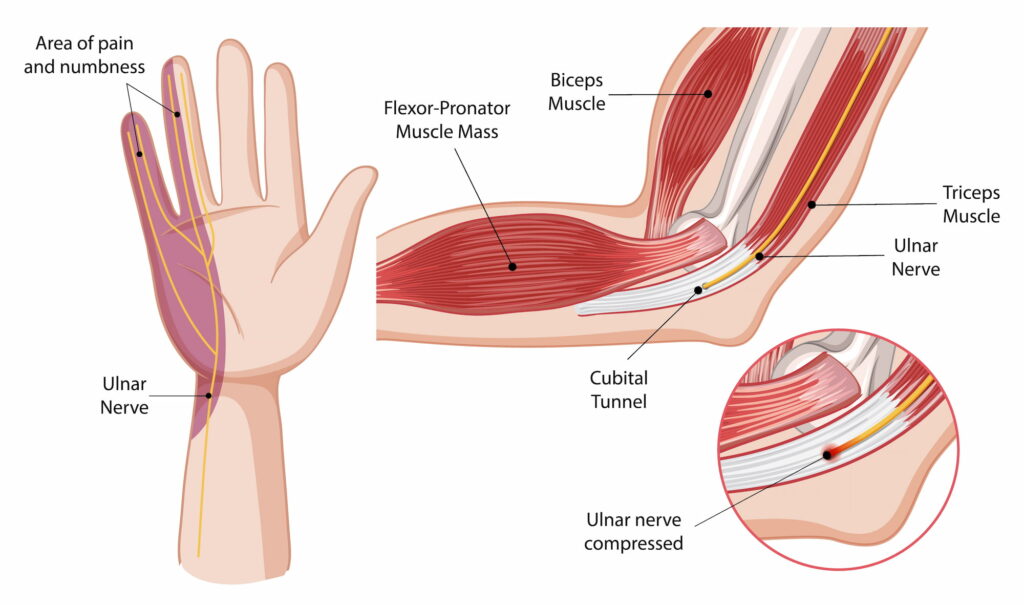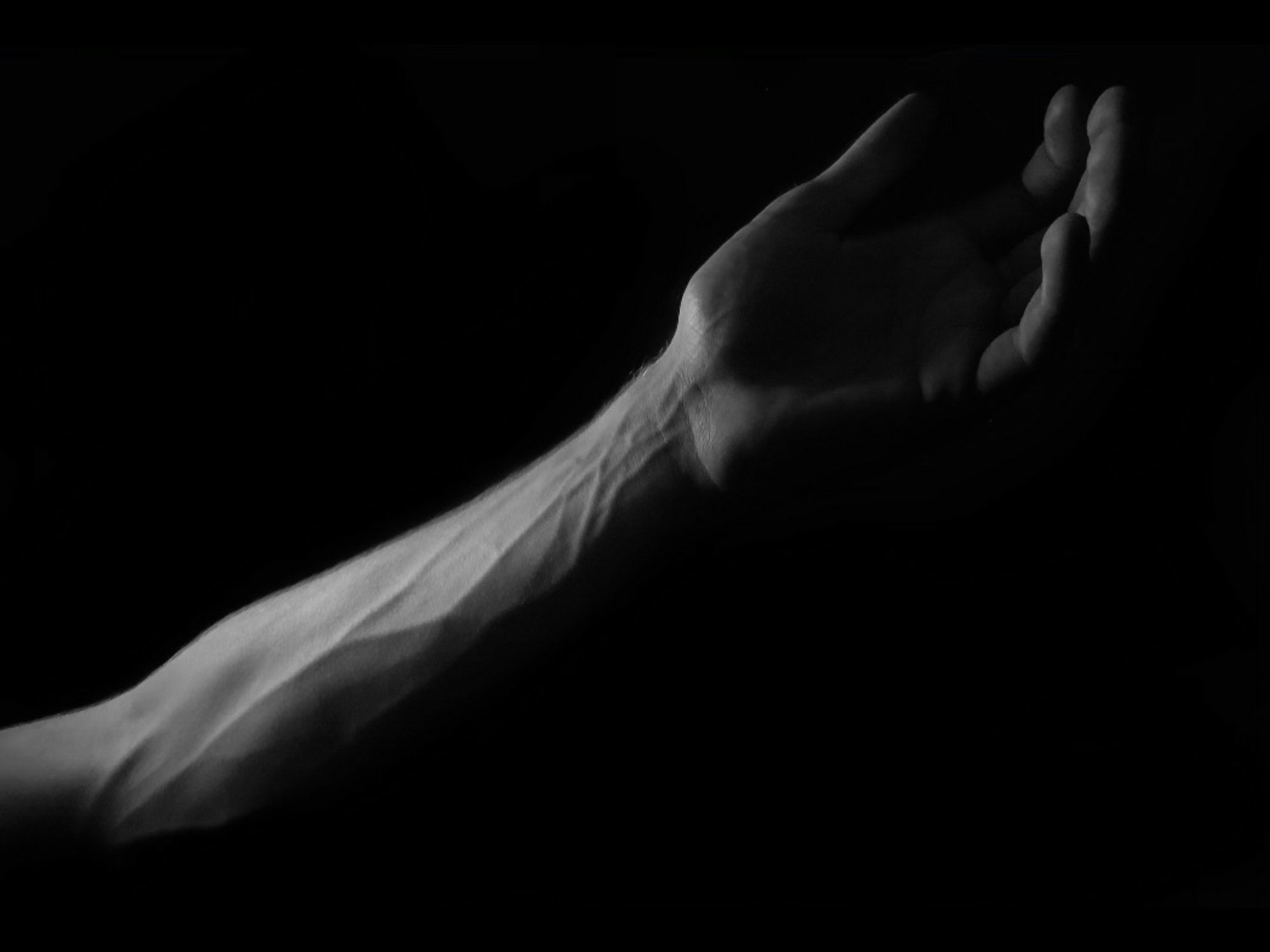Cubital Tunnel Syndrome is caused by compression of the ulnar nerve, which runs along the inside of the elbow. You may know this as the “funny bone,” a nerve that can become compressed within a small tunnel of tissues near the elbow, leading to symptoms that affect the hand, wrist, and forearm.
What causes Cubital Tunnel Syndrome?
- There are two main contributors: compression (pressure) and traction (stretching)
- Repetitive arm movements or pressure on the elbow joint, especially in individuals who engage in activities that involve regular and repeated bending and straightening of the arm
- Pressure on the nerve can arise from things such as bone spurs from elbow arthritis, scarring from surgery or a fluid filled cyst called a ganglion
- There are several areas of tissue around the elbow that can be the cause of compression
What symptoms would I notice?
Symptoms of Cubital Tunnel Syndrome often start with mild discomfort but can progress over time if untreated:
- Tingling or numbness in the fingers (notably the ring and little fingers), especially when the elbow is bent for long periods, such as when talking on the phone, or has been leant on.
- Night pain or tingling, particularly when sleeping with the elbow bent.
- Weakness in the hand, affecting grip and making it challenging to perform fine motor tasks in more advanced cases
- Muscle wasting or a claw-like posture of the fingers, particularly if the syndrome has been present for an extended period

How is Cubital Tunnel Syndrome diagnosed?
Your GP will examine your arm, looking for signs of nerve compression, and in some cases, imaging tests such as X-rays, ultrasound, MRI, or CT scans may be recommended to rule out other potential issues.
Nerve Conduction Studies (NCS) or an Electromyogram (EMG) may be orderded to assess nerve function and confirm the diagnosis if there is any doubt. This involves small needles being placed in the muscles of the forearm and hand to check if the electrical signals are being sent along the nerve properly. This test is normally undertaken at a neurologist’s practice (nerve specialist).
Treatment options
Non-operative treatments are generally the first approach and can help reduce symptoms for many patients; however, surgical options may be considered if non-operative treatments fail to provide relief.
Non-operative treatments
- Anti-inflammatory medications such as non-steroidal anti-inflammatory drugs to reduce inflammation around the ulnar nerve.
- Adjusting or avoiding activities that exacerbate symptoms, such as repetitive bending or putting pressure on the elbow.
- Wearing a splint at night to keep the elbow straight can prevent nighttime symptoms caused by a bent elbow position during sleep.
Operative treatments
- Ulnar Nerve Decompression: This procedure involves releasing the tight structures around the nerve, allowing it more space and reducing pressure.
- Ulnar Nerve Transposition: In some cases, the nerve is repositioned to a new location within the elbow to relieve pressure. This procedure may involve removing a small section of bone to create more room for the nerve, called an epicondylectomy.
- Tingling and pain usually improve earlier than strength, and not all patients have a complete recovery.
Read more about what surgery and recovery entails below:
Managing Cubital Tunnel Syndrome via surgery with Dr Lambers
If surgery is necessary, Dr Lambers will work closely with you to manage your recovery and help you return to normal activities as smoothly as possible. Most patients experience significant improvement in symptoms after surgery, though recovery time varies with how long the condition was present before surgery and its severity.

